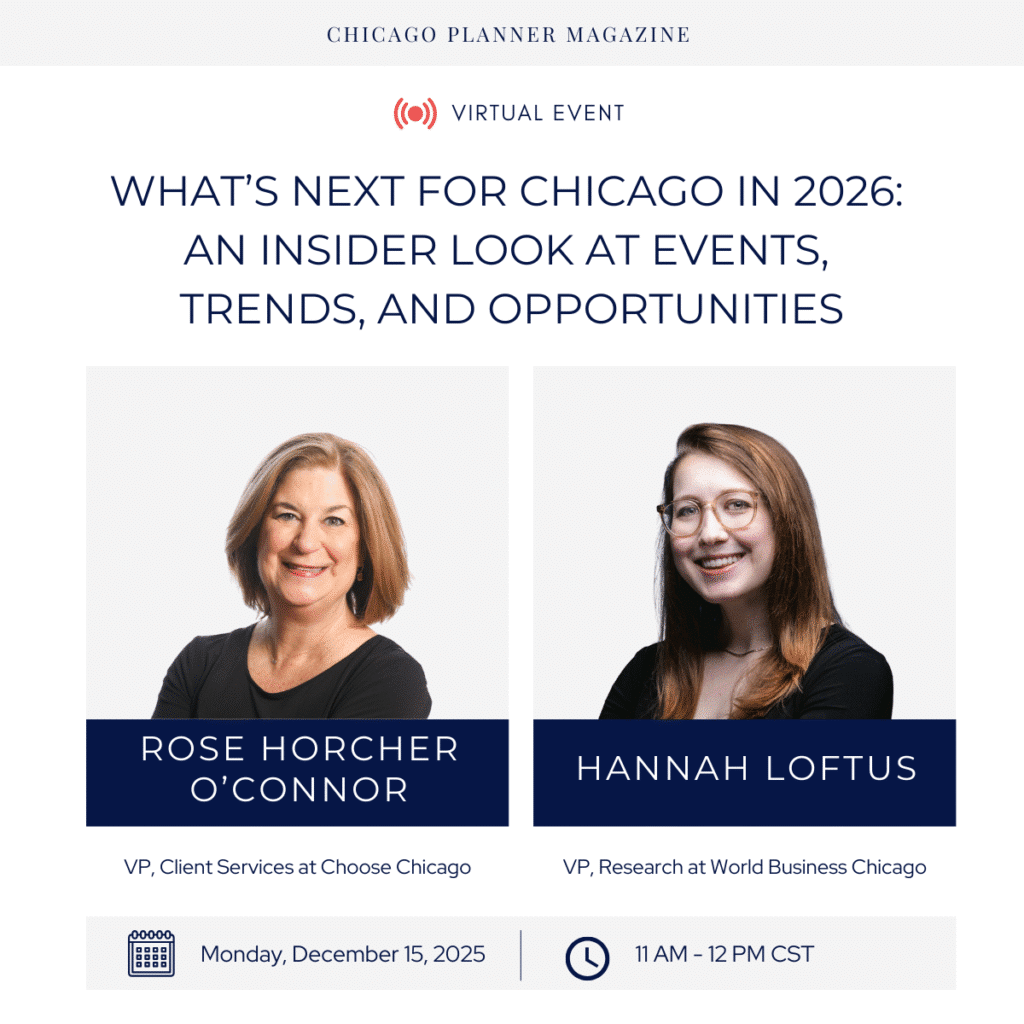
When you’ve produced more than 300 programs in just six years, you learn how to create unforgettable panels that engage and inform your audience, while highlighting the expertise of your speakers. For Eva Penar, a seasoned event professional with a journalism background, the goal isn’t just to fill seats on stage, but to create conversations that resonate, challenge perspectives, and leave audiences thinking differently than when they walked in.
“I’ve always had a deep interest in bringing people together around ideas — whether through conversation, storytelling, or shared experiences,” Eva shared. “Early in my career, event logistics were simply part of the job, but I realized I had both a knack for it and a passion for it. The energy of a well-executed event is incredibly rewarding.”
For Eva, designing a great panel is a little like putting together a jigsaw puzzle — the pieces have to fit just right.
“The magic of panels is in the chemistry,” she explained. “With my journalism background, I think a lot about balance — finding voices that complement, challenge, and elevate each other. Sourcing speakers is part research, part intuition, and part matchmaking. When the final group brings unexpected perspectives or challenges the audience to think differently, that’s when you know you’ve nailed it.”
That means going beyond the usual suspects. Eva actively seeks out authentic communicators who can connect their ideas to real-world experiences, often tapping into niche networks, overlooked thought leaders, and underrepresented voices.
“A good speaker isn’t just an expert,” she said. “They’re a communicator who knows how to make their insights resonate with the specific audience in the room.”
Eva shared the secrets behind what she believes makes for a strong panel, she didn’t hesitate to share her must-haves and why they matter:
-
- Balanced perspectives so the conversation feels dynamic and inclusive.
- Strong moderation to keep the pace, draw out the best in each speaker, and manage the energy in the room.
- Audience engagement with meaningful Q&A or interactive moments that make attendees feel part of the conversation.
- A story arc that gives the session a clear beginning, middle, and end — even in a panel format.
- Chemistry and prep so speakers feel connected before they walk on stage.
- Balancing Recognition and Relevance
- Timing, calendars, and competing priorities can make even the best-laid plans challenging. “You can have the perfect topic and a dream list of speakers, but schedules don’t always line up,” Eva said. “Then you’re balancing organizational goals, member expectations, and a shifting news cycle.”
Eva is also quick to point out that the most recognizable name isn’t always the best fit. “Sometimes the ‘right’ speaker for the topic isn’t the one with the biggest platform. I’ve seen less well-known panelists deliver ideas that completely reframe the discussion — and high-profile ones bring the least fresh perspectives. It’s about fit, not just fame.”
Out of the hundreds of panels she’s produced, Eva says the ones she remembers most are those where leaders show genuine humility.
“They’re collaborative, open to input, and respectful to everyone involved — including their own teams,” she said. “It’s a reminder that leadership shows in every part of the process, not just under the spotlight.”
She’s also witnessed the opposite: speakers who seem warm and authentic in front of an audience but don’t treat others with the same respect behind the scenes. “It reinforces for me that the best events reflect integrity at every step.”
One thing that makes Eva stand out at organizing panels is understanding that planning isn’t just about what happens on stage — it’s about shaping the entire audience experience.
“I always think about who’s in the room and why it matters to them,” she explained. “How does this panel connect to the broader mission or brand? What kind of momentum will it create before, during, and after? And how can we make it accessible and inclusive so everyone can engage?”
This approach is why she collaborates with marketing teams early in the process. “The way an event is framed and promoted influences not just who attends, but how the conversation continues afterward.”
However, even with experience, surprises happen. Eva recalled a high-profile panel where a headliner dropped out just a week before the event.
“It was definitely a scramble,” she said. “We pivoted quickly, called on our network for a strong alternate, and reframed the conversation so they could shine. It reinforced the importance of having a ‘bench’ — trusted voices you can tap in a pinch — and the value of staying flexible without sacrificing quality.”
In a time when audiences can consume content anytime, anywhere, Eva believes panels still offer something uniquely valuable.
“When done well, they’re one of the most efficient and impactful ways to deliver insight and connection,” she said. “But they require thought, care, and intentionality — both behind the scenes and on stage. It’s not about assembling résumés; it’s about creating real conversation.”
Eva’s Advice for Planners?
“Curate with intention, not convenience. Value ideas over celebrity. Invest in strong moderation. Think about the full audience experience. And always have a backup plan.”
“When a panel works, it feels alive. You can see it in the audience — they’re leaning in, connecting dots in real time. And if the panelists leave feeling inspired too? That’s when you know you’ve done it right.”




0 Comments